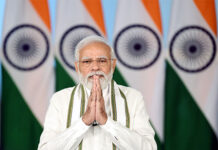
China said on Monday that all married couples would be allowed to have three children, scrapping a two-child policy that has failed to boost the country’s dwindling birthrates and prevent a demographic calamity.
The governing Communist Party’s declaration signals an admission that the country’s world-leading reproduction restrictions have compromised the country’s survival. The labour pool is dwindling, and the population is greying, posing a challenge to China’s decades-long industrial plan for rising from poverty to become an economic powerhouse.
However, it is far from apparent that loosening the policy much more will be beneficial. People in China have reacted coolly to the Chinese Communist Party’s previous decision, made in 2016, to allow couples to have two children. To them, such initiatives do nothing to alleviate their concerns about growing educational costs and the costs of supporting elderly parents, which are exacerbated by a dearth of day care and a prevalent culture of extended work hours.
China’s birth rate has been declining for four years, including in 2020, when the number of newborns born fell to its lowest level since the Mao period. The country’s total fertility rate — an estimate of the number of children born throughout a woman’s lifetime — is now 1.3, significantly below the replacement rate of 2.1, raising the prospect of population decline over time.
The Monday statement continues to blur the line between individual reproductive rights and government restrictions on women’s bodies. Leading Chinese voices have urged the Communist Party to abolish all birth limitations. Beijing, however, has resisted, led by Xi Jinping, the country’s party head who has sought for tighter control over the country’s 1.4 billion people.
“Opening it up to three children is far from enough,” said Huang Wenzheng, a demography expert with the Center for China and Globalization, a Beijing-based research center. “It should be fully liberalized, and giving birth should be strongly encouraged.”








